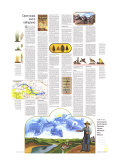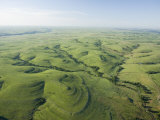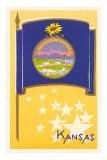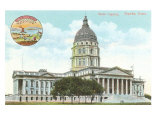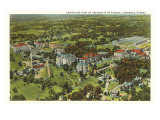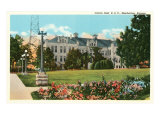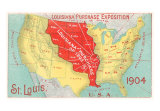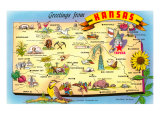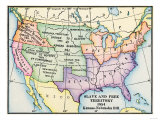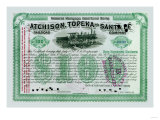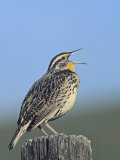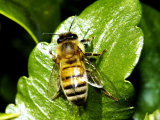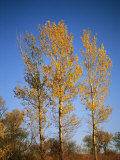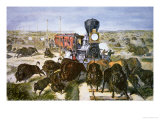|
|
Kansas Posters, Prints, Photographs, Maps, & Calendars, pg 1/2
for educators and home schoolers; themed decor in studio or office.
|
geography > NA > US > MW > KANSAS 1 | 2 < social studies
|
|
Kansas, known as the “Sunflower State” and the “JayHawker” State, joined the Union on January 29, 1861 as the 34th state. The name derives from ‘Kansa’ which means “People of the south winds.”
Kansas, in the West North Central Region, is bordered by Missouri on the east, Oklahoma on the south, Colorado on the west and Nebraska on the north.
|
|
|
|
|
Kansas is not the flat, baked tableland that many conceive. Nor is it particularly corny in August, or any other month; wheat, oil wells, and livstock dominate its landscape. The terrain slopes upward from an elevation of about 700 feet in the southeast to some 4,000 feet in the northwest, and the visitor who is willing to look for them will find a surprising array of recreational and historical sites.
Most of the state's excellent eaat-west highways fan from Kansas City, Kansas, appropriately an industrial center that grew where the industrious Wyandot Indians built a town; stores and offices now surround the tribal cemetery. With its larger namesake flanking it beside the Missouri River, Kansas City forms a metropolis that is one of the most sprawling in the nation.
The majority of Kansas's bigger cities cluster in the eastern third of the state. There three of them – Lawrence, Manhattan, and Emporia – form a triangle of leafy, progressive college towns. There, too, lie many of the artificial lakes that offer camping, fishing, boating, and other water activities within an excellent state park system. Worth exploring are the Flint Hills, a gently tilted series of outcrops that ripple grassy and scenic across the state from Marshall County in the north to Cowley in the south. Wild flowers dot the slopes from spring through autumn. Eight-foot-high big bluestem and other grasses once nurtured great herds of buffalo; now cattle thrive on them, and in autumn you can see stock driven to market along country roads.
Spotted through the Flint Hills are such tree-lined towns as Alma and Cottonwood Falls, their sturdy limestone buildings reflecting the character of the land. Towns in central and western Kansas once resounded to the gunfire and hoof clatter of trail-driving days. Dodge City, Abilene, Hays, Wichita, and others preserve reminders of that Wyatt Earp and Bat Masterson era. And at Quinter you can go by covered wagon, stagecoach, and horseback on a wagon train trip of two to four days along an old pioneer trail.
(poster text about Kansas)
|
|
|
|
|
|
|
|
|
|
|
|
|
|
|
|
|
|
|
Sunflower
Kansas State Flower
The term “sunflower” refers to annual or perennial plants native to the Americas, in the genus Helianthus, family Asteraceae.
Sunflowers have a large yellow flowering head, made up of numerous florets packed closely together on stems that can grow to 9 ft (3 meters) tall. The leaves and buds of young sunflowers do exhibit heliotropism (sun turning), from east to west during the course of a day. Mature flower heads do not.
• botany posters
• Sunflowers
|
|
|
|
Honey Bee, Apis Mellifera
Kansas State Insect
The honey bee is important as a principal pollinator of crops and for producing pleasant-tasting and healthful honey. A social insect, the honey bee lives in highly organized colonies.
• insect posters
• food posters
|
|
|
|
Cottonwoods
Kansas State Tree
Cottonwoods, native to North America, Europe and western Asia, grow along river banks in the riparian zone (between land and water) thus providing soil conservation in flood prone areas. The wood, though course and strong (used for shipping crates and pallets) has the lowest BTU of any wood.
• trees posters
• Autumn posters
|
|
|
|
American Bison
Kansas State Animal
The American bison, commonly known as buffalo, is the largest terrestrial mammal in North America. Bison are nomadic grazers and travel in herds.
|
|
The American Bison species close to extinction due to commercial hunting. The current population is estimated at 350,000 compared to an estimated 60 to 100 million in the mid-19th century.
• animal posters
• Eadweard Muybridge photographs
|
|
|
previous page | top | State of Kansas Posters, pg 2/2
|
|
I have searched the web for visual, text, and manipulative curriculum support materials - teaching posters, art prints, maps, charts, calendars, books and educational toys featuring famous people, places and events - to help teachers optimize their valuable time and budget.
Browsing the subject areas at NetPosterWorks.com is a learning experience where educators can plan context rich environments while comparing prices, special discounts, framing options and shipping from educational resources.
Thank you for starting your search for inspirational, motivational, and educational posters and learning materials at NetPosterWorks.com. If you need help please contact us.
|
|
|













